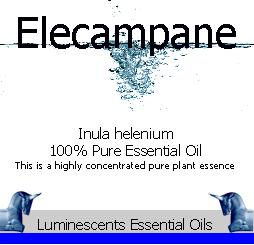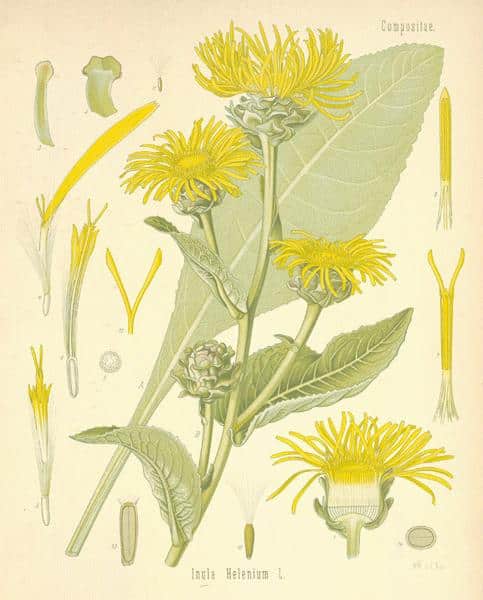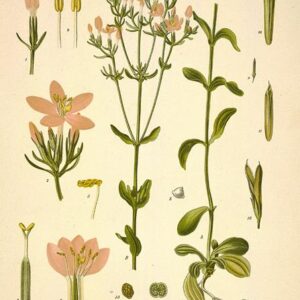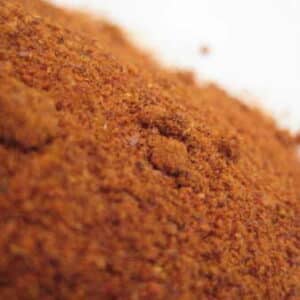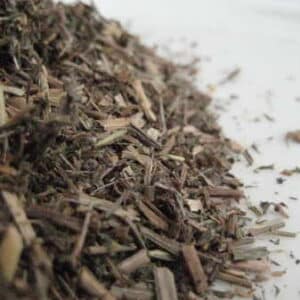Elecampane Sweet (Inula helenium) 100% Pure Essential Oil
£45.00
This product is a 100% Pure Essential Oil and NOT the macerated or infused plant oil which is simply Inula helenium steeped in a carrier oil for a period of time and which is far less expensive but is often and quite incorrectly labelled as the essential oil – IT IS NOT.
BOTANICAL NAME: Inula helenium
SCENT: Elecampane Essential Oil is intensely herbaceous, green, floral with a hint of chamomile and sweetly warm (almost perfume like in its intensity which is now its principal use) but the macerated or infused plant oil obtained from the plant can have little or no aroma (see full description for constituents)
STRENGTH OF AROMA: Strong
PLANT PART USED: Flowers, Leaves and occasionally Twigs too
EXTRACTION METHOD: Steam Distillation.
ORIGIN: Corsica
COLOUR: Elecampane Essential Oil is light yellow to pale green depending on the distillation chamber used. If Copper it will be greenish which is quite normal.
CONSISTENCY: Medium
NOTE: Mid
Inula helenium from which Elecampane Sweet Essential Oil is a perennial composite plant common in many parts of Great Britain, and ranges throughout central and Southern Europe, and in Asia as far eastwards as the Himalayas.
TRADITIONAL ATTRIBUTES:
Not commonly used in aromatherapy nowadays due to its rarity and expense although its attributes include astringent, anti bacterial, fungicidal, tonic, calming and respiratory.
Not recommended for use on skin due to its ability to cause dermal sensitivity, even when well diluted. Use as an inhalant or to vapourise when its aroma becomes more prevalent. It is primarily used as a fixative when employed in cosmetics and perfume because it extends the life of other aromas and does little to change the characteristics of oils blended with it.
Elecampane Blends Well With:-
It blends well with Cananga, Cinnamon, Labdanum, Lavender, Mimosa, Frankincense, Orris, Violet, Cedarwood, Patchouli, Sandalwood, Cypress, & Bergamot .
Chemical Constituent Variants:-
The constituents within the oil will vary dependent upon the climate at the time of its growth and harvest and the location of its harvest. For instance – Middle Eastern Elecampane is very different with Cineole (54.89%), p-cymene (16.2%), [beta]- pinene (6.94%) and borneol (5.44%) and from from Greece it contains a high proportion of epi-a-cadinol (up to 30.2%) and bornyl acetate (25.4%).
In Corsica where it most commonly obtained it can contain a-pinene (0.96%), b-pinene (1.3%), y-terpinene (0.09%), camphene (10.41%), d-limonene (1.34%), para-cymene (0.17%), terpinolene (0.05%) a-muurolene (0.34%), b-caryophyllene (1.96%), delta-cadinene (0.22%), y-cadinene (0.56%), germacrene D (0.07%) a-terpineol (1.48%), borneol (13.45%), lavandulol (0.18%), linalol (0.08%), terpinen-4-ol (0.10%) t-cadinol (2.35%) camphor (0.08%), cis-jasmone (0.08%) bornyl acetate (47.17%), camphene hydrate (0.31%), geranyl isobutyrate (0.4%), lavandulic ester (0.48%), lavandulyl acetate (0.34%), other esters (1.29%) 1,8 cineole (0.08%), 2,3-dehydro-1,8 cineole (3.82%), sesquiterpenic epoxide (0.25%) methyl thymol (0.29%)
The oil can be Green or pale Yellow in hue – why? If it is green it has been distilled in a traditional copper still and trace elements of copper will be present whilst distillation from a stainless steel still will yield a pale yellow oil.
| Size (ml) | 100ml, 10ml, 200ml, 25ml, 2ml, 50ml, 5ml, sampler |
|---|
